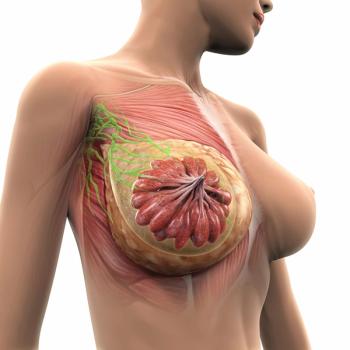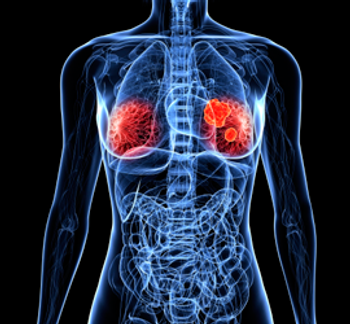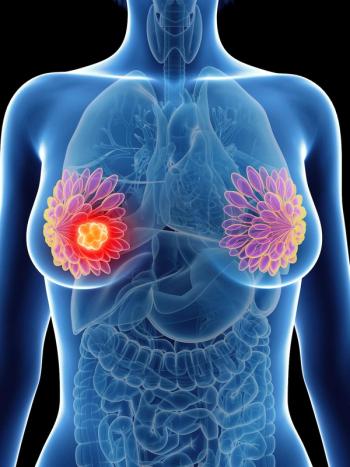
Breast Density Reductions ID Preventive Benefit of Tamoxifen
Epidemiologist Jack Cuzick, PhD, and colleagues, writing in the Journal of the National Cancer Institute in April, concluded that “tamoxifen-induced reductions in breast density can be used to identify women who will benefit the most from prophylactic treatment with this drug.”
Epidemiologist Jack Cuzick, PhD, and colleagues, writing in the Journal of the National Cancer Institute in April, concluded that “tamoxifen-induced reductions in breast density can be used to identify women who will benefit the most from prophylactic treatment with this drug.”
Dr. Cuzick is the John Snow Professor of Epidemiology at the Wolfson Institute of Preventive Medicine at Queen Mary, University of London and head of the Centre for Epidemiology, Mathematics, and Statistics at Cancer Research UK in London.
Mammographic breast density is a strong risk factor for breast cancer, and tamoxifen reduces both mammographic breast density and the risk of breast cancer in women at high risk. The purpose of the study was to assess whether tamoxifen-induced breast-density reductions in women who already had breast cancer would be predictive of their response to chemopreventive treatment with tamoxifen.
The investigation was a nested case-control study within the first International Breast Cancer Intervention Study (IBIS-I), a randomized prevention trial of tamoxifen vs placebo. The mammographic breast density was visually assessed and expressed as a percentage of the total breast area, in 5% increments. A total of 123 case subjects were included; these women had been diagnosed with breast cancer at or after their first follow-up mammogram, which occurred 12–18 months after study entry. A total of 942 women without breast cancer comprised the control group. The investigators adjusted for other risk factors using multivariate logistic regression.
At their 12- to 18-month mammogram, 46% of women in the tamoxifen arm had ≥ 10% reduction in breast density. Compared with the placebo group, those in the tamoxifen group who had at ≥ 10% in breast density had a 63% reduction in breast cancer risk (odds ratio [OR] = 0.37, 95% confidence interval [CI] = 0.20–0.69, P = .002), whereas those who took tamoxifen but had < 10% reduction in breast density had no risk reduction (OR = 1.13, 95% CI = 0.72 to 1.77, P = .60). Among women in the placebo group, there was no statistically significant difference in breast cancer risk between those with < 10% reduction in mammographic density and those who had a greater reduction. In conclusion, Dr. Cuzick and colleagues wrote, “The 12- to 18-month change in mammographic breast density is an excellent predictor of response to tamoxifen in the preventive setting.”
Writing in the December 6 issue of Nature Reviews in Clinical Oncology (Assi et al), Dr. Cuzick and colleagues from the Wolfson Institute of Preventive Medicine, noted that mammographic density accounts for about 16% of breast cancers, but current methods of assessing mammographic density are subjective and time-consuming. They urged that mammographic density information be added to current models of breast cancer risk assessment, to improve the accuracy of mammographic-density assessment in individual patients. “Although mammographic density has clearly been shown to be a powerful factor for predicting the risk of developing breast cancer,” they emphasized, “its potential role in assessing hormonal preventive regimens and helping to tailor screening algorithms cannot be fully realized until we have more-precise, simple, and reproducible density measures.”
Newsletter
Stay up to date on recent advances in the multidisciplinary approach to cancer.



















































































